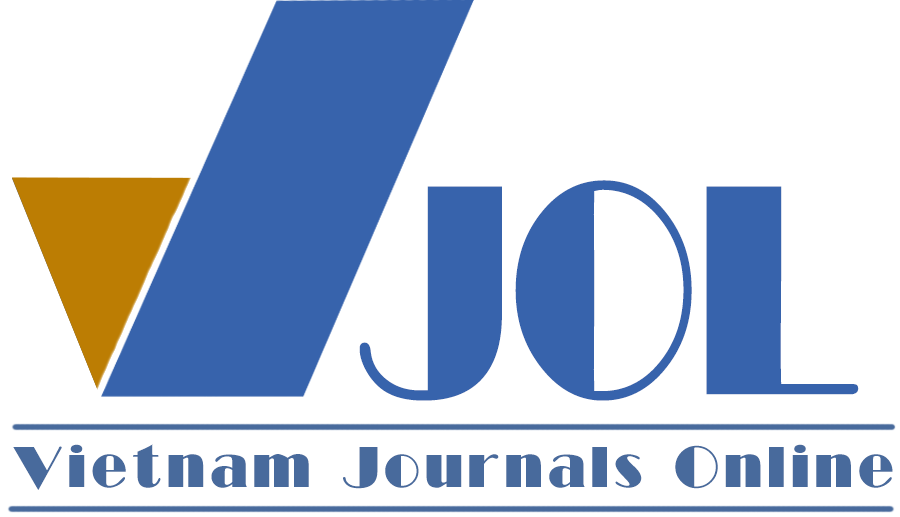Impacts of global value chain participation on current account imbalance: Evidence of ASEAN countries
Authors
DOI: https://doi.org/10.57110/jebvn.v4i1.293Keywords:
Global value chain, current account imbalance, ASEANReferences
Aizenman, J., & Sun, Y. (2010). Globalization and the sustainability of large current account imbalances: Size matters. Journal of Macroeconomics, 32(1), 35-44. https://doi.org/10.1016/j.jmacro.2009.11.001
Blanchard, O., & Milesi-Ferretti, G. M. (2012). (Why) should current account balances be reduced? IMF Economic Review, 60(1), 139–150. https://doi.org/10.1057/imfer.2012.2
Bousnina, R., & Gabsi, F. B. (2022). Global value chain participation, institutional quality and current account imbalances in the MENA region. Economic Research Forum (ERF), Working Paper No. 1556.
Brumm, J., et al. (2019). Global value chain participation and current account imbalances. Journal of International Money and Finance, 97, 111–124. https://doi.org/10.1016/j.jimonfin.2019.01.018
Chaudhary, S., & Khoi, N. V. (2019). The position of Vietnam in the global value chain. Vietnam Journal of Social Sciences & Humanities, 5(3), 292-313.
Felice, G., & Tajoli, L. (2021). Trade balances and global value chains: Is there a link? Structural Change and Economic Dynamics, 59, 228–246. https://doi.org/10.1016/j.strueco.2021.08.013
Fernandes, A. M., Kee, H. L., & Winkler, D. (2022). Determinants of global value chain participation: Cross-country evidence. The World Bank Economic Review, 36(2), 329–360. https://doi.org/10.1093/wber/lhab017
Freund, C., & Warnock, F. (2007). Current account deficits in industrial countries: The bigger they are, the harder they fall? In G7 Current Account Imbalances: Sustainability and Adjustment (pp. 133–168). University of Chicago Press. https://www.nber.org/system/files/chapters/c0130/c0130.pdf
Ghosh, A., & Ramakrishnan, U. (2012). Current Account Deficits: Is there a Problem?https://www.elibrary.imf.org/openurl?genre=article&issn=0015-1947&volume=2017&issue=005&artnum=A023
Gokten, S., & Karatepe, S. (2016). Electricity consumption and economic growth: A causality analysis for Turkey in the frame of import-based energy consumption and current account deficit. Energy Sources, Part B: Economics, Planning, and Policy, 11(4), 385-389. https://doi.org/10.1080/15567249.2012.666332
Haltmaier, J. (2015). Have global value chains contributed to global imbalances? International Finance Discussion Papers No. 1154. Board of Governors of the Federal Reserve System (U.S.).
Johnson, R. C. (2018). Measuring global value chains. Annual Review of Economics, 10(1), 207–236. https://doi.org/10.1146/annurev-economics-080217-053600
Kim, D., Goo, J., & Jung, J. (2022). Examination of trade imbalance between Korea and Mexico from global value chain perspective. Ibero-America Research, 33(1), 25–51.
López-Villavicencio, A., & Mignon, V. (2021). Does backward participation in global value chains affect countries’ current account position? Review of World Economics, 157, 65-86. https://doi.org/10.1007/s10290-020-00390-2
Mello, L. de, Padoan, P. C., & Rousová, L. F. (2011). The growth effect of current-account reversals. VoxEU.org. https://voxeu.org/article/growth-effect-current-account-reversals
Nguyen, T. H. T., Nguyen, N. A., & Nguyen, D. C. (2011). Current account deficit: Causes and solutions. Depocen Working Paper Series.
Obstfeld, M., & Rogoff, K. S. (2005). Global current account imbalances and exchange rate adjustments. Brookings Papers on Economic Activity, 2005(1), 67-146. https://doi.org/10.1353/eca.2005.0020
Singh, T. (2015). Sustainability of current account deficits in India: An intertemporal perspective. Applied Economics, 1–18. https://doi.org/10.1080/00036846.2015.1039701
Unger, R. (2017). Asymmetric credit growth and current account imbalances in the euro area. Journal of International Money and Finance, 73, 435-451. https://doi.org/10.1016/j.jimonfin.2017.02.017
World Bank Group. (2022). Climate and development: An agenda for action - emerging insights from World Bank Group 2021–22 Country Climate and Development Reports. Washington, DC: World Bank.
Downloads
Downloads
Published
Abstract View
PDF Downloaded
How to Cite
Issue
Section
License
Copyright (c) 2024 Trần Mạnh Hà

This work is licensed under a Creative Commons Attribution-NonCommercial 4.0 International License.
by VNU Journal of Economics and Business
Most read articles by the same author(s)
- Tran Manh Ha, Cash holdings and firm performance: A perspective on non-linear relationships and the impact of the COVID-19 pandemic , VNU JOURNAL OF ECONOMICS AND BUSINESS: Vol. 4 No. 5
- Tran Manh Ha, The impact of income tax on foreign direct investment attraction: International evidence , VNU JOURNAL OF ECONOMICS AND BUSINESS: Vol. 5 No. 1






